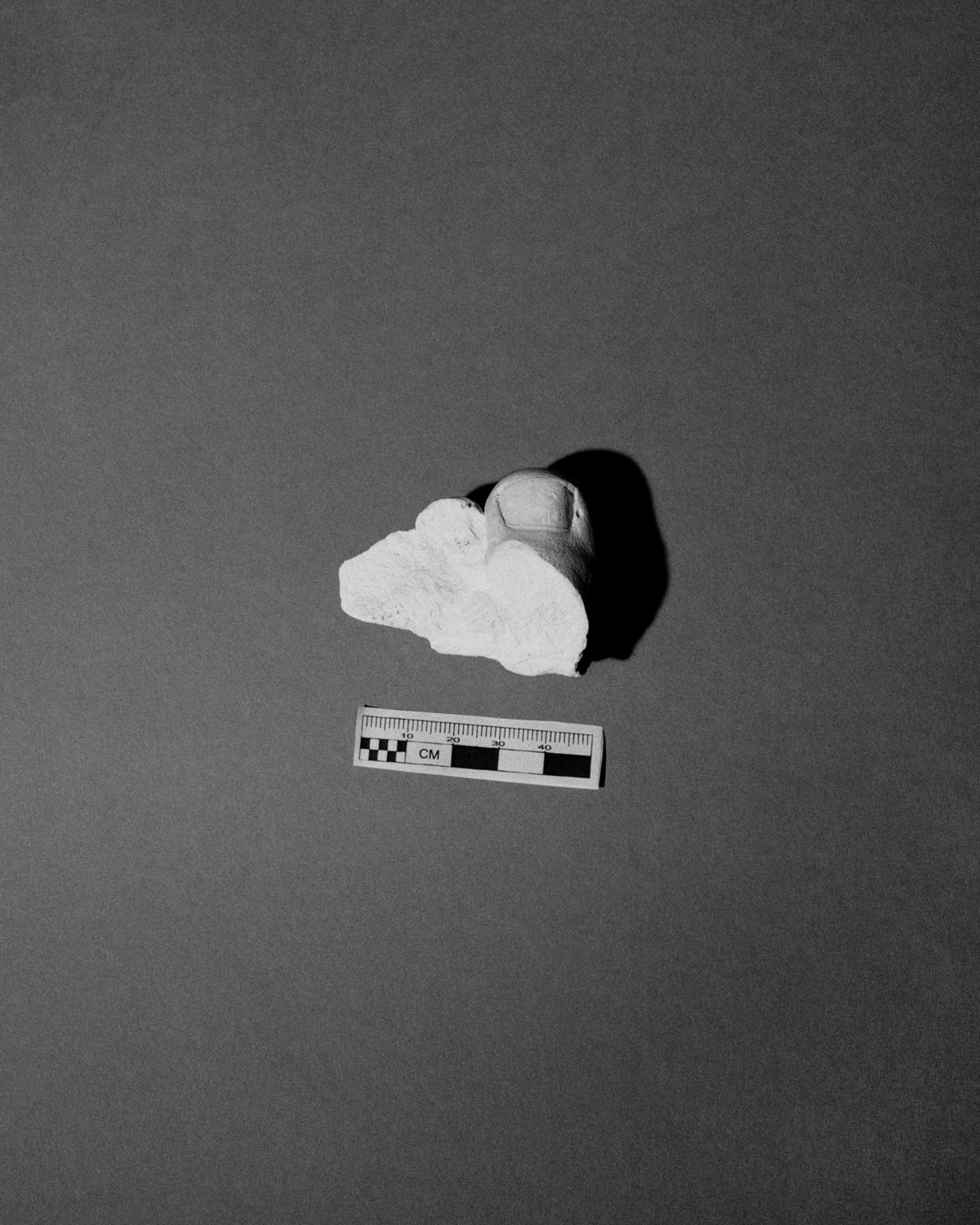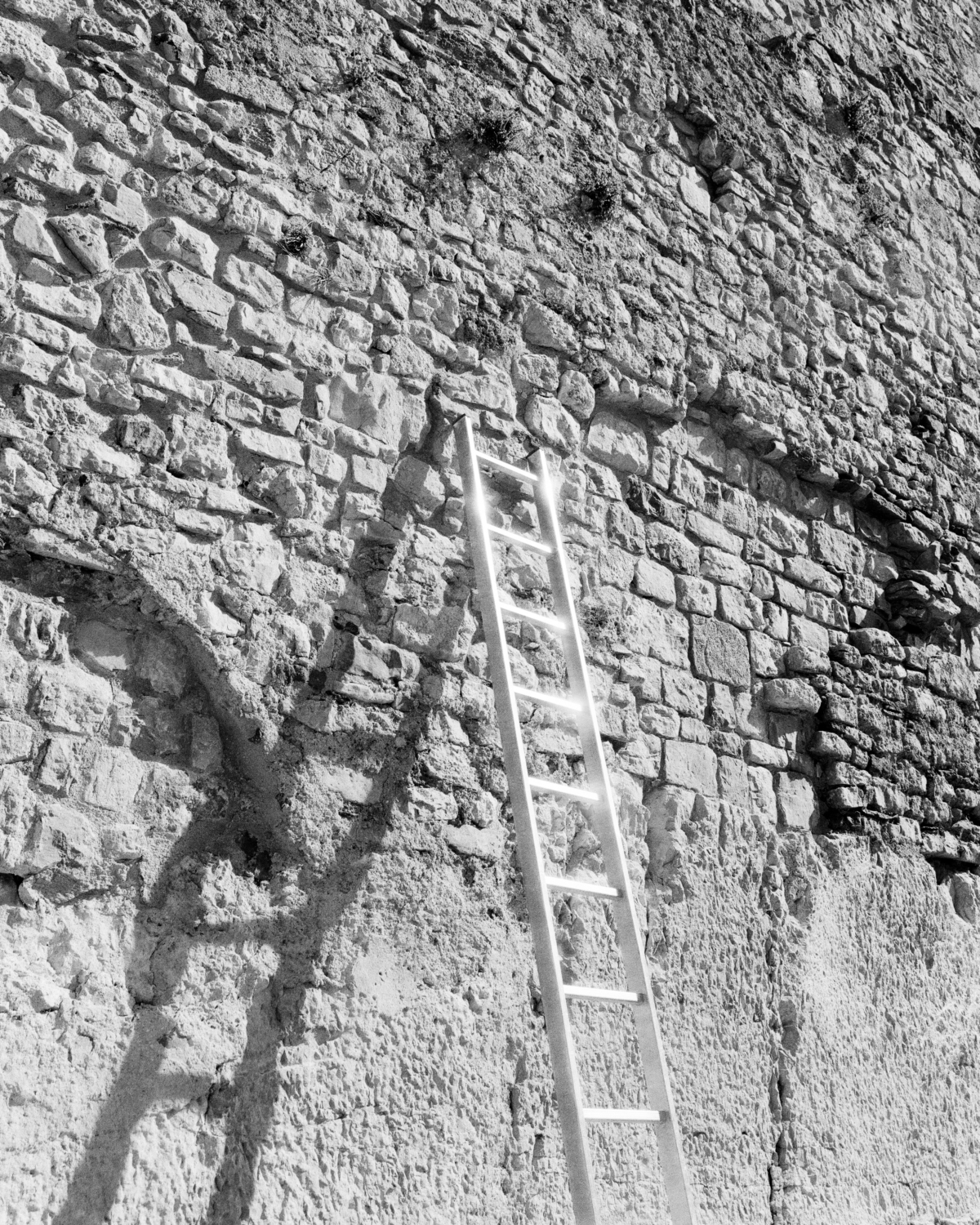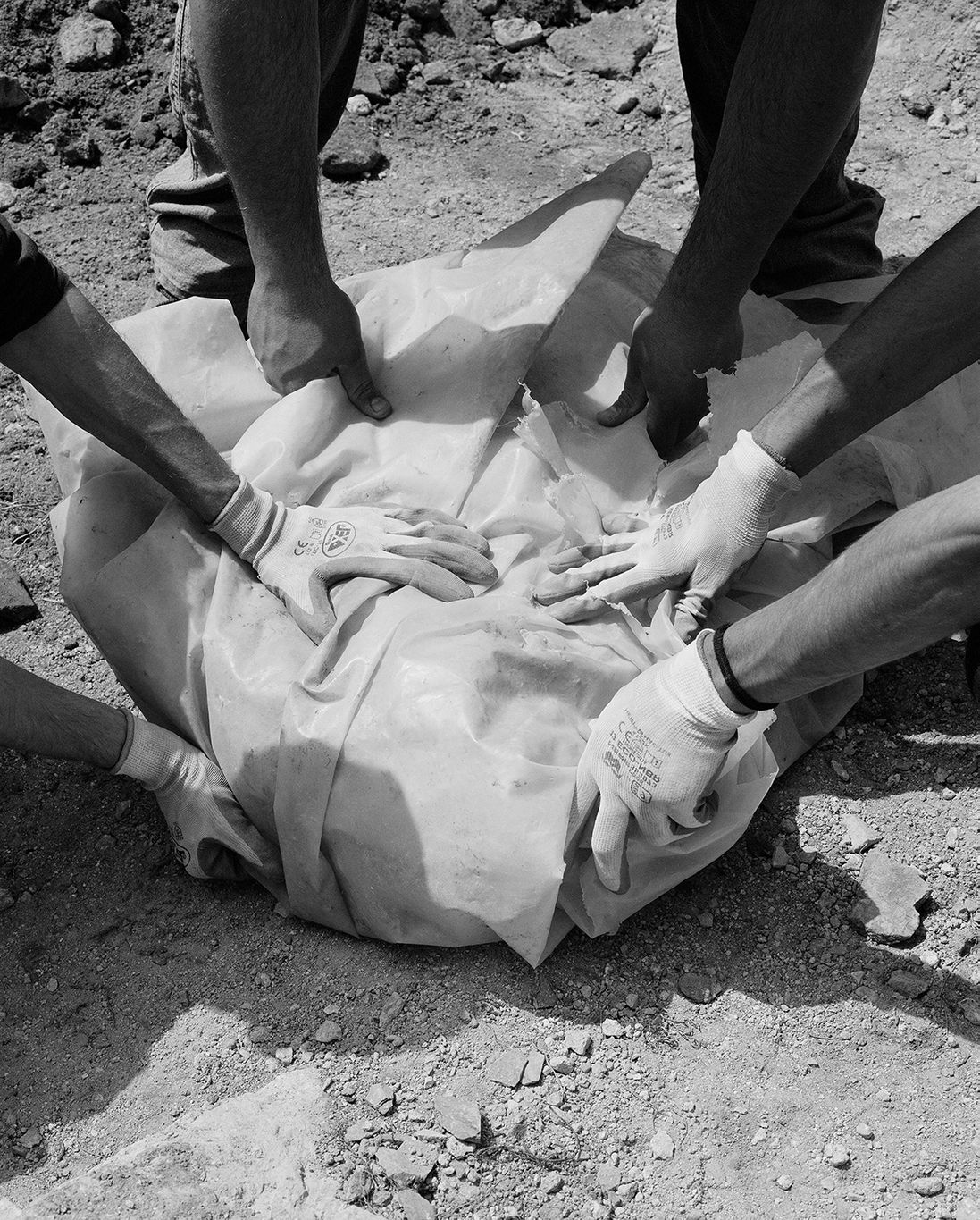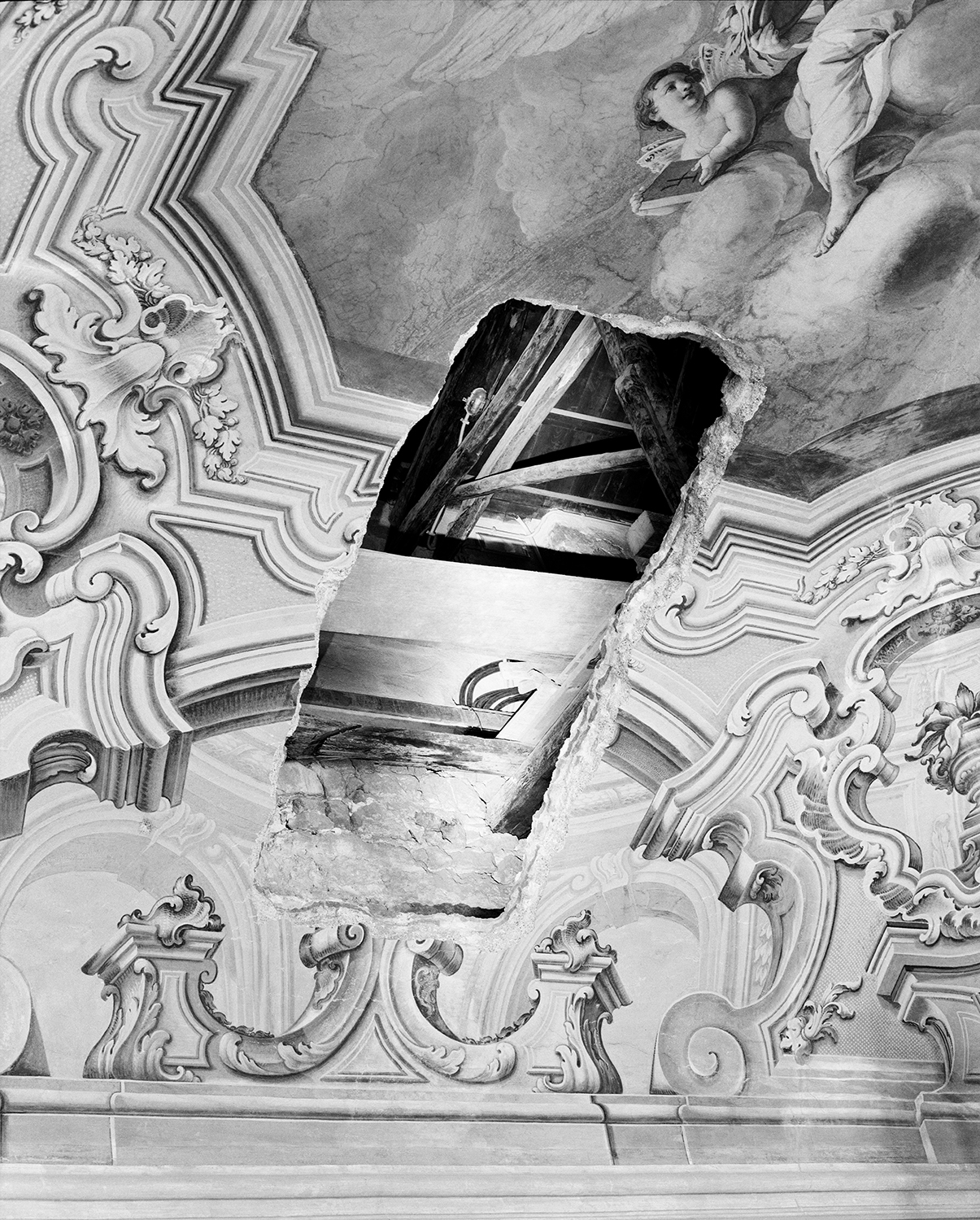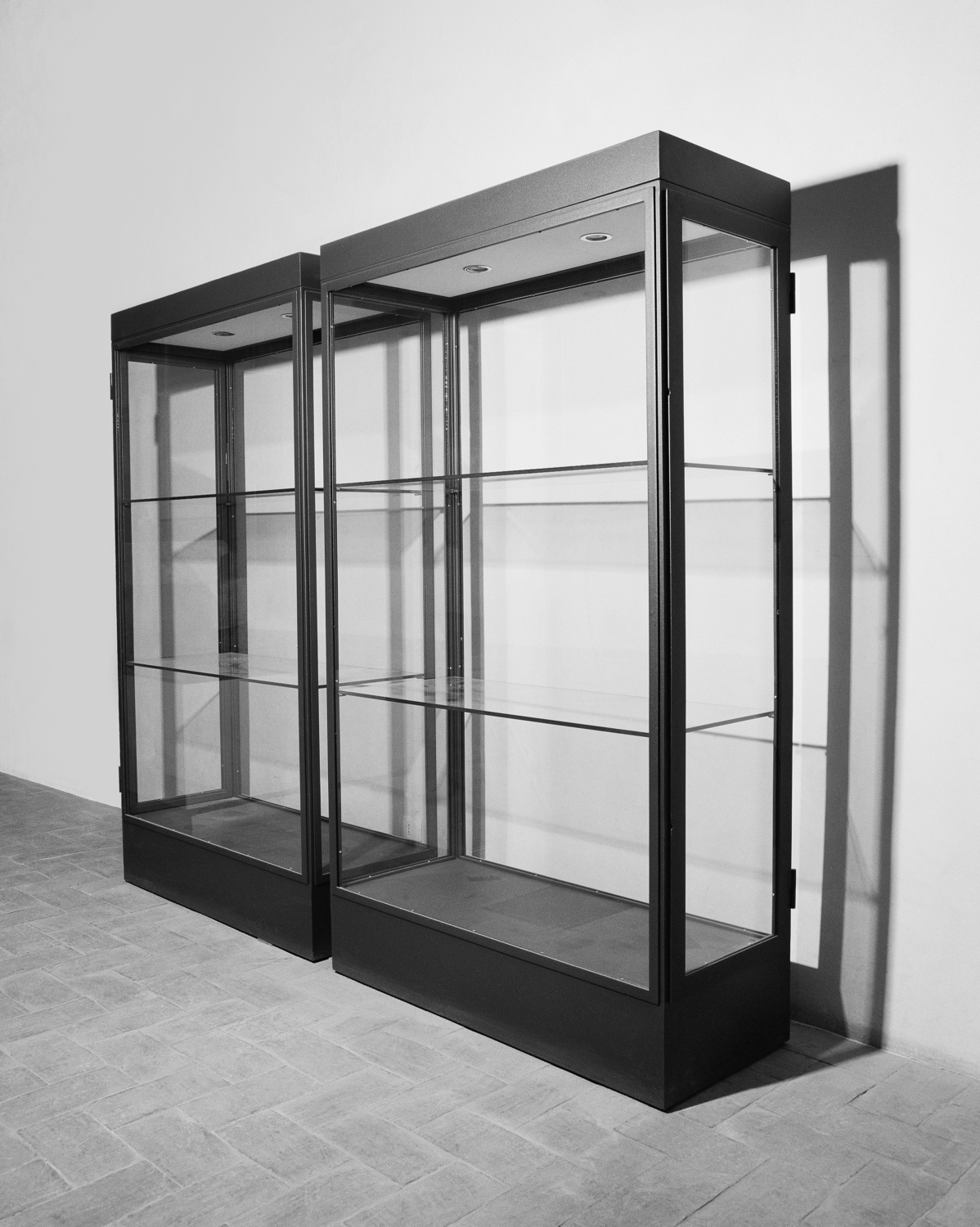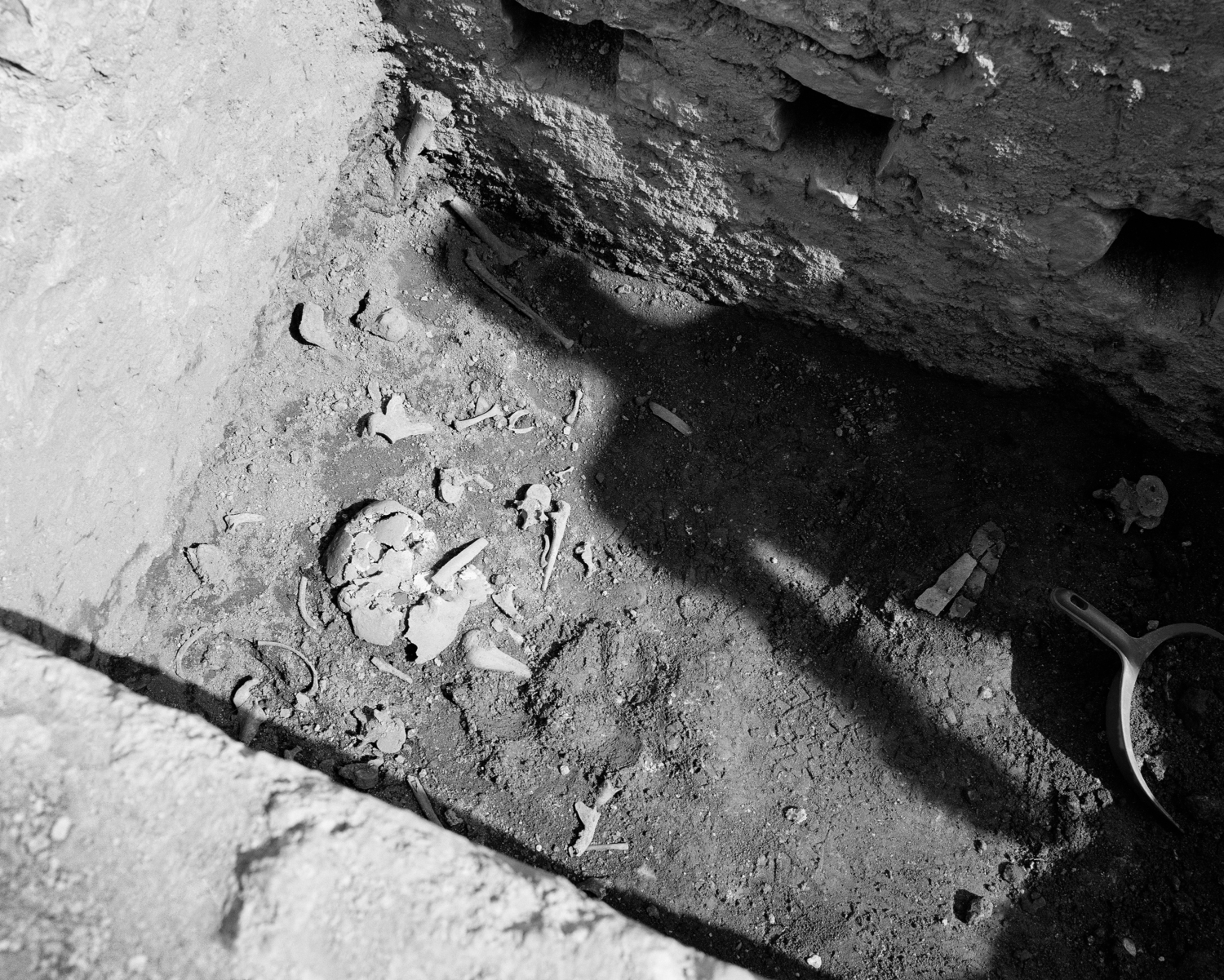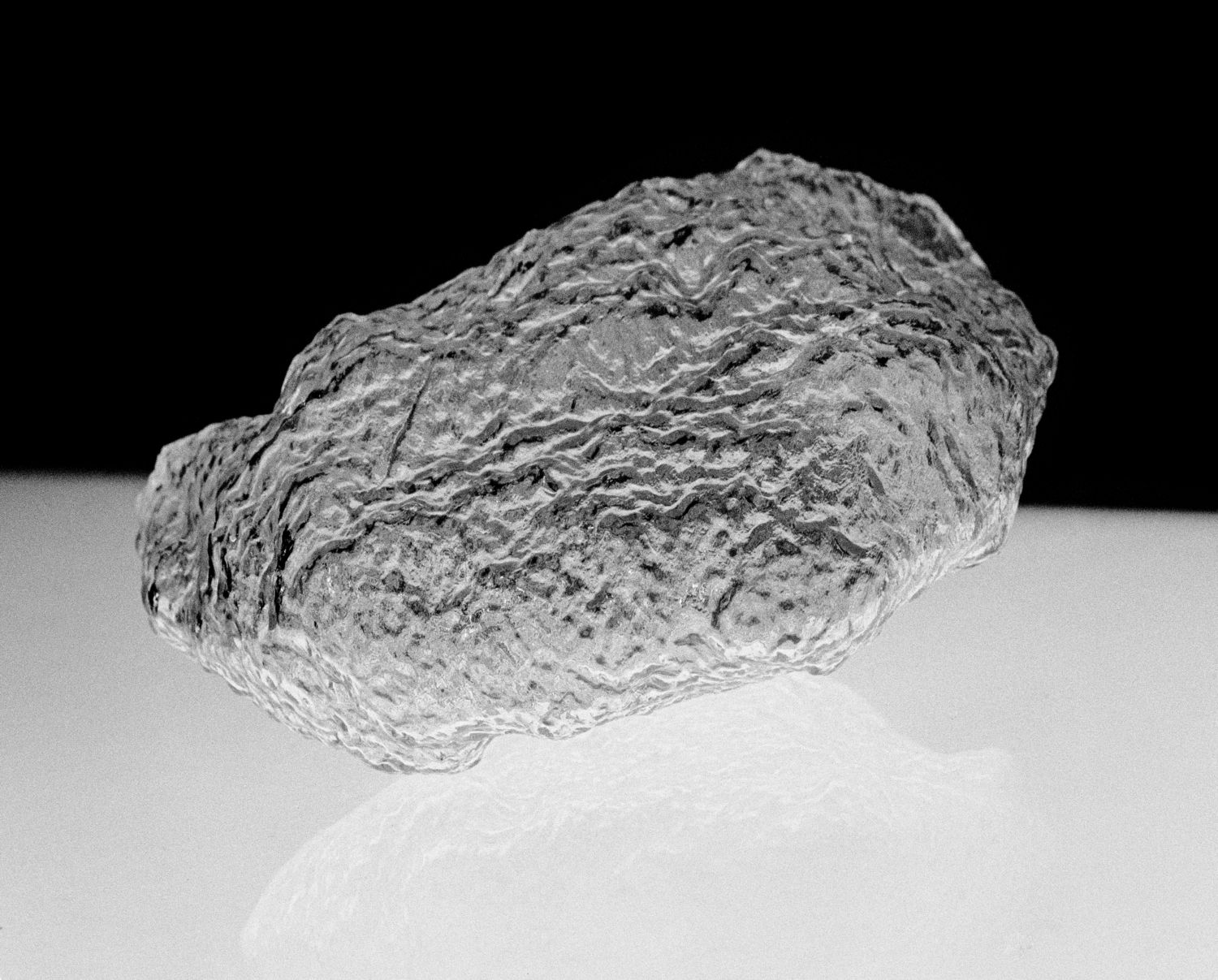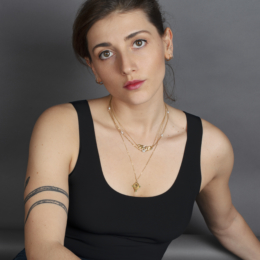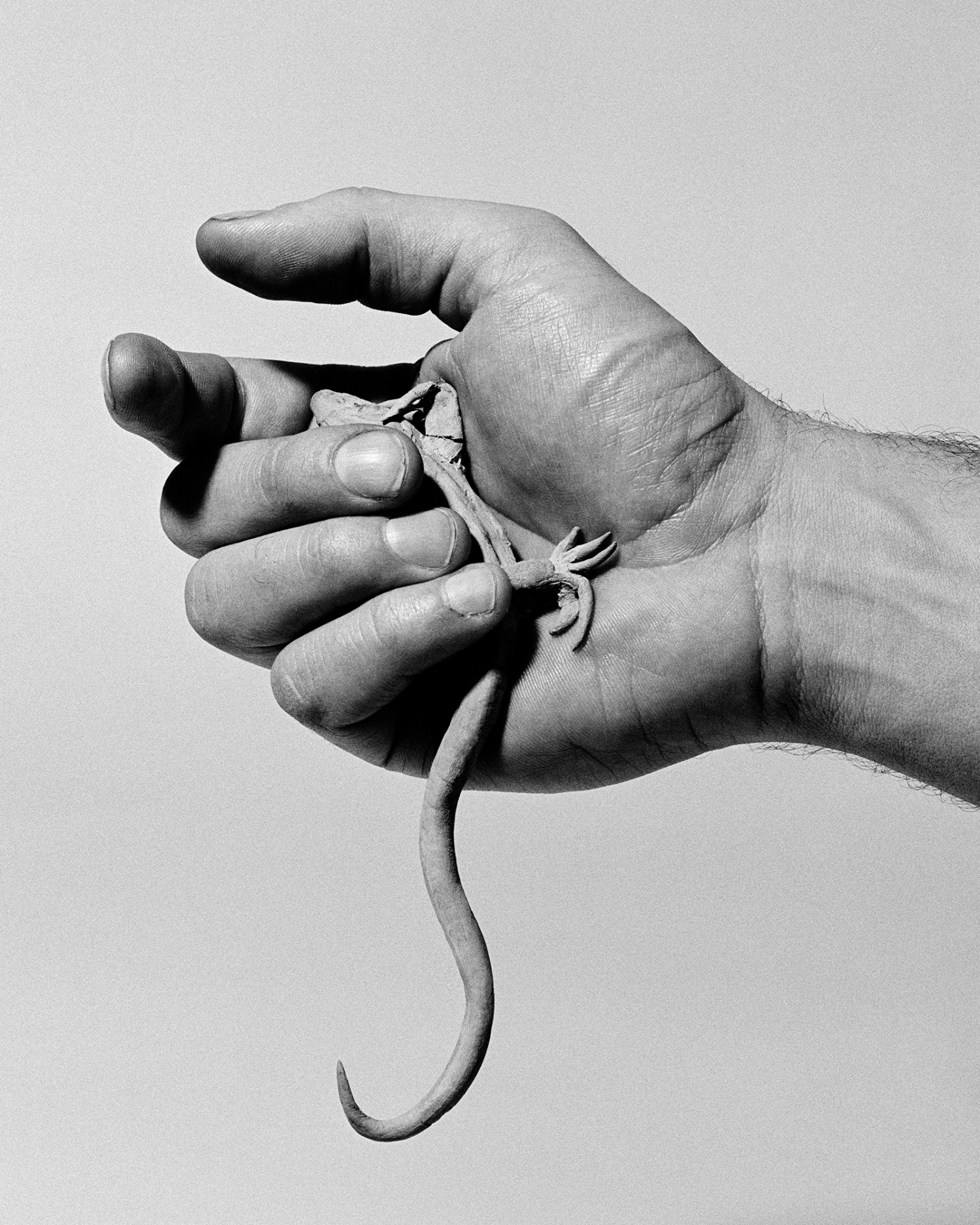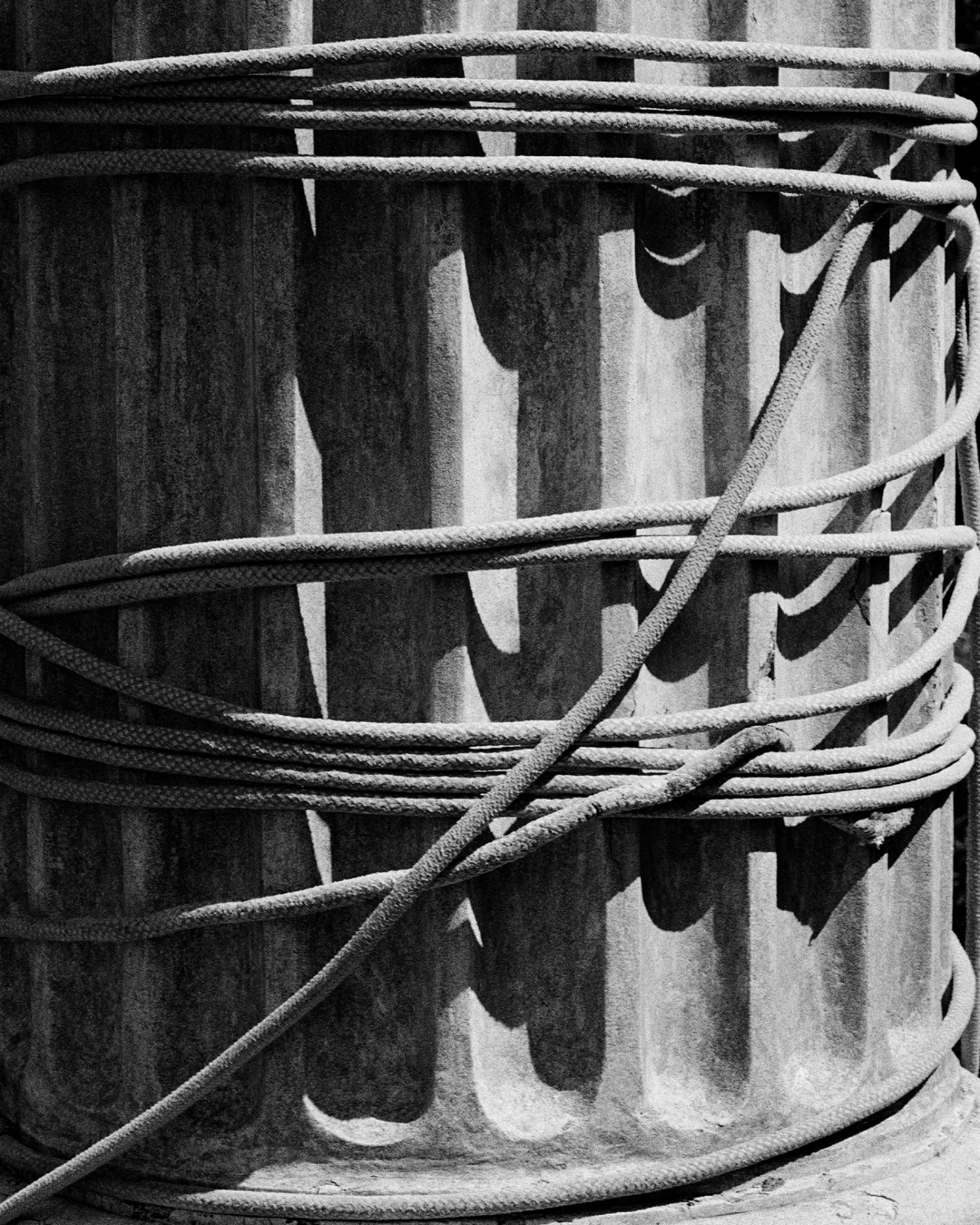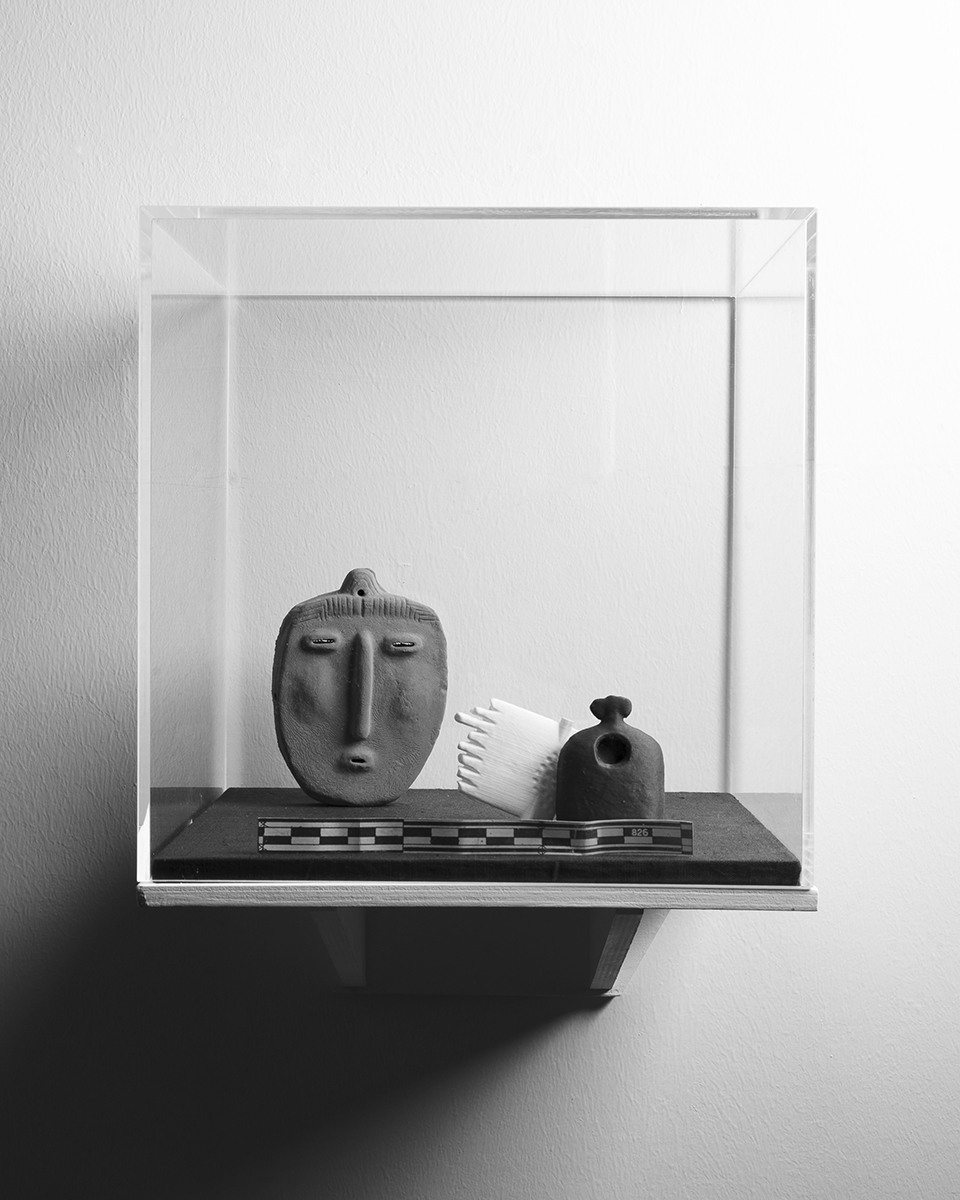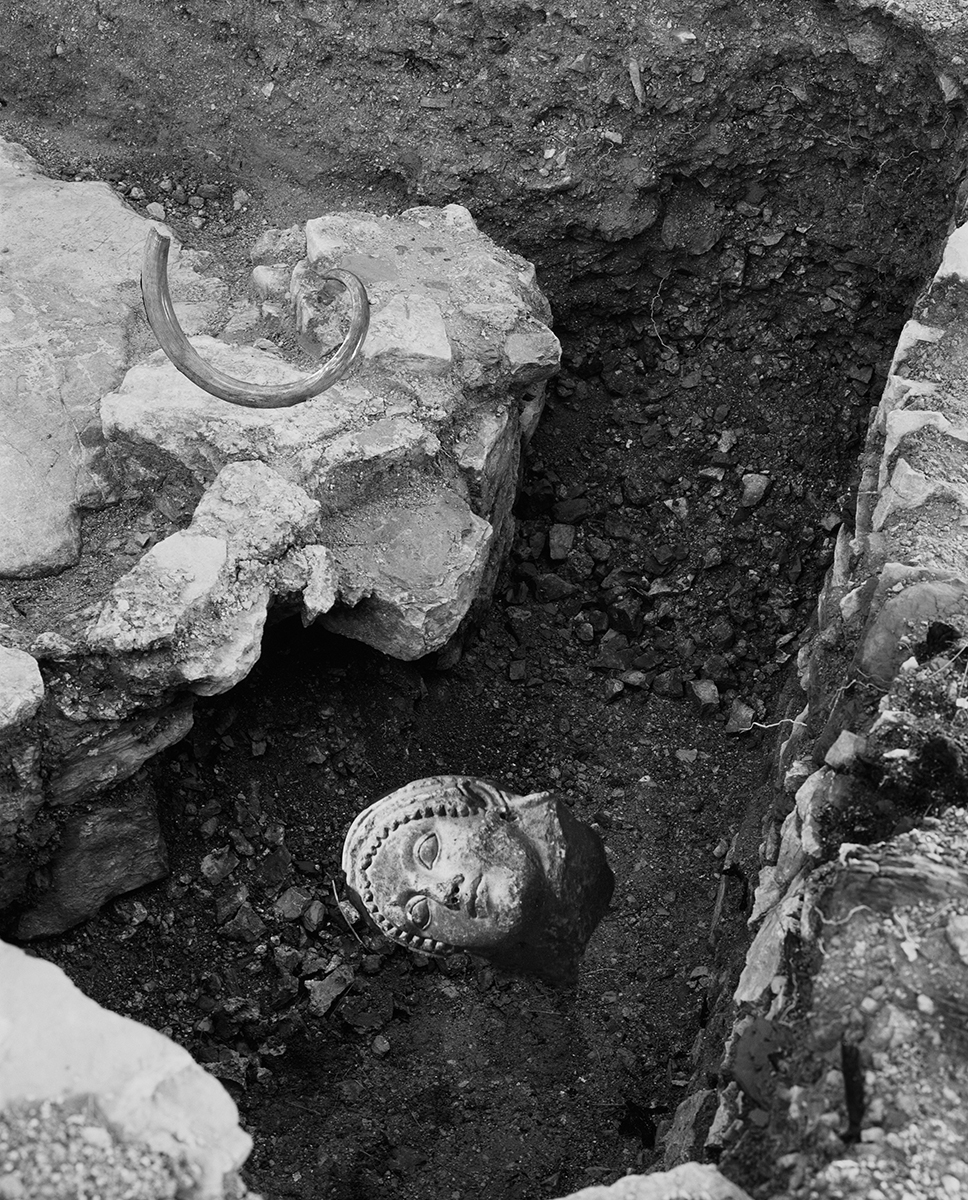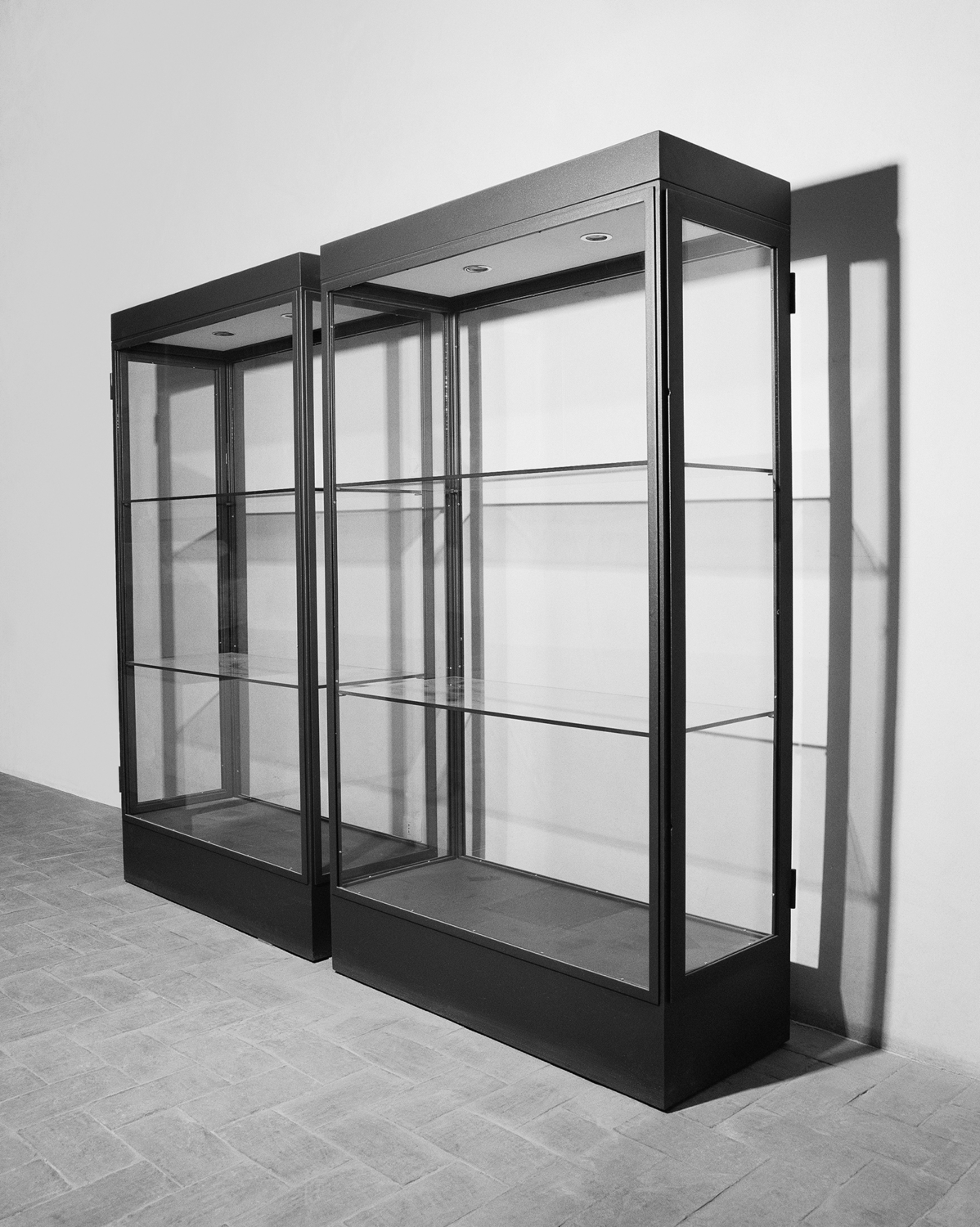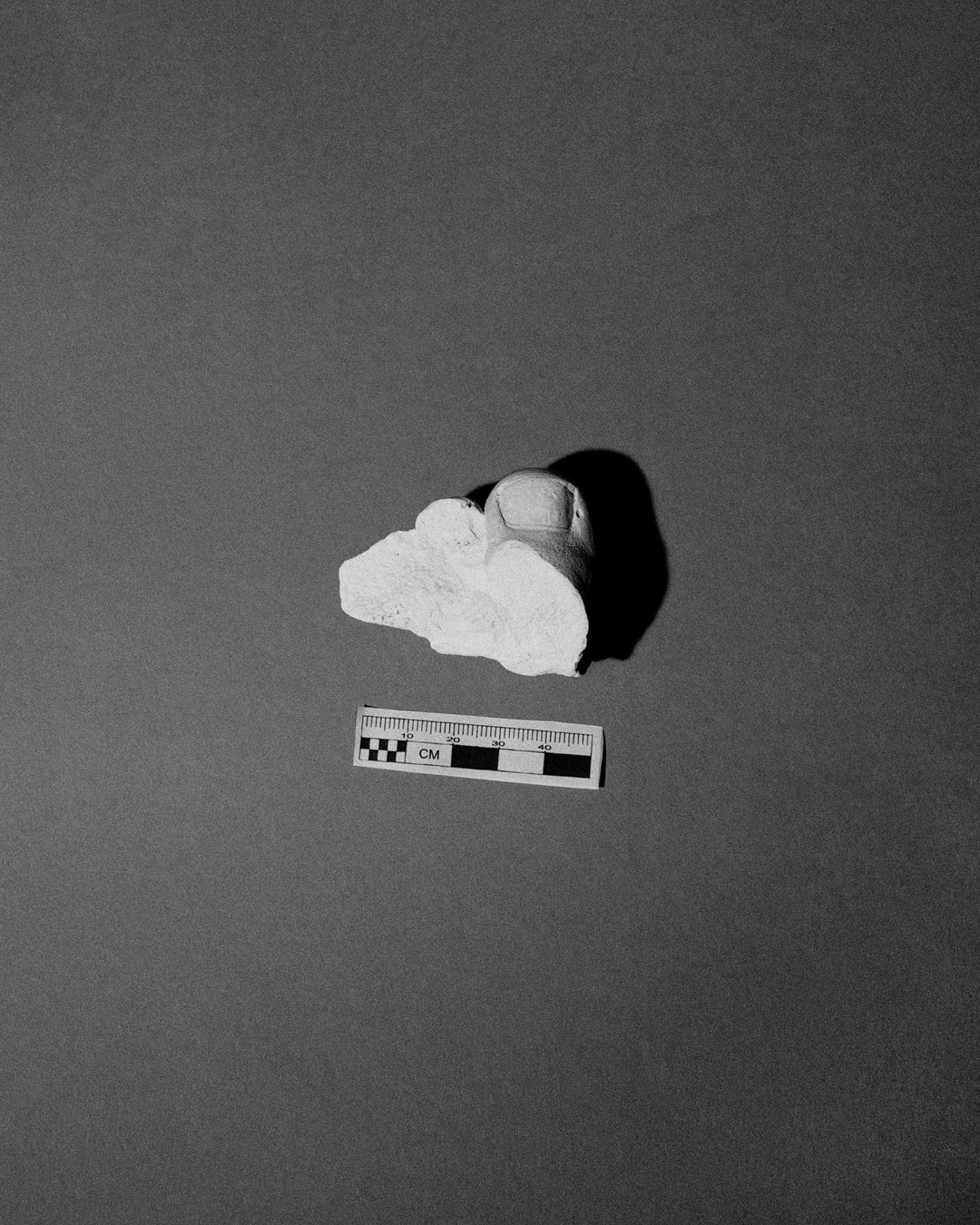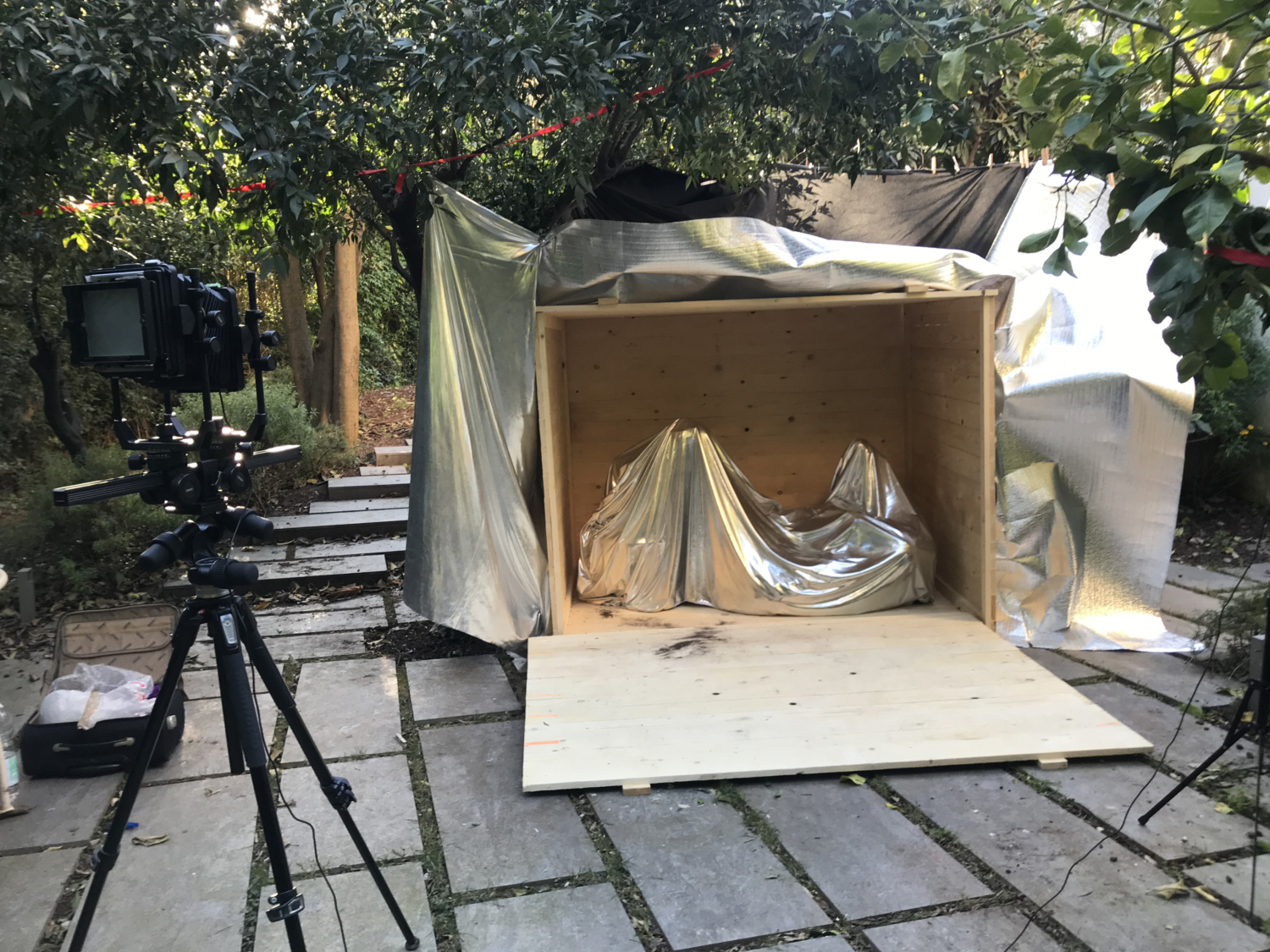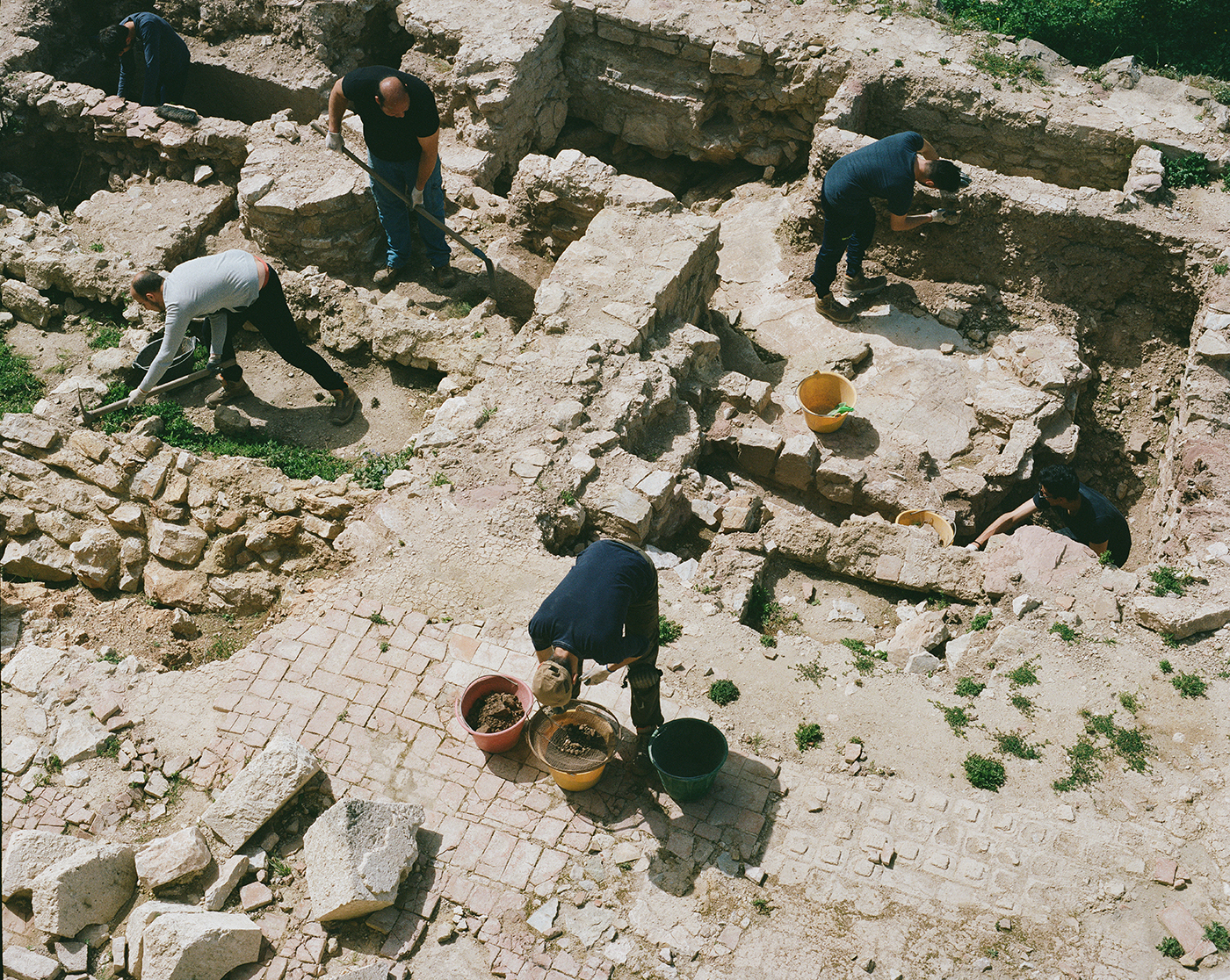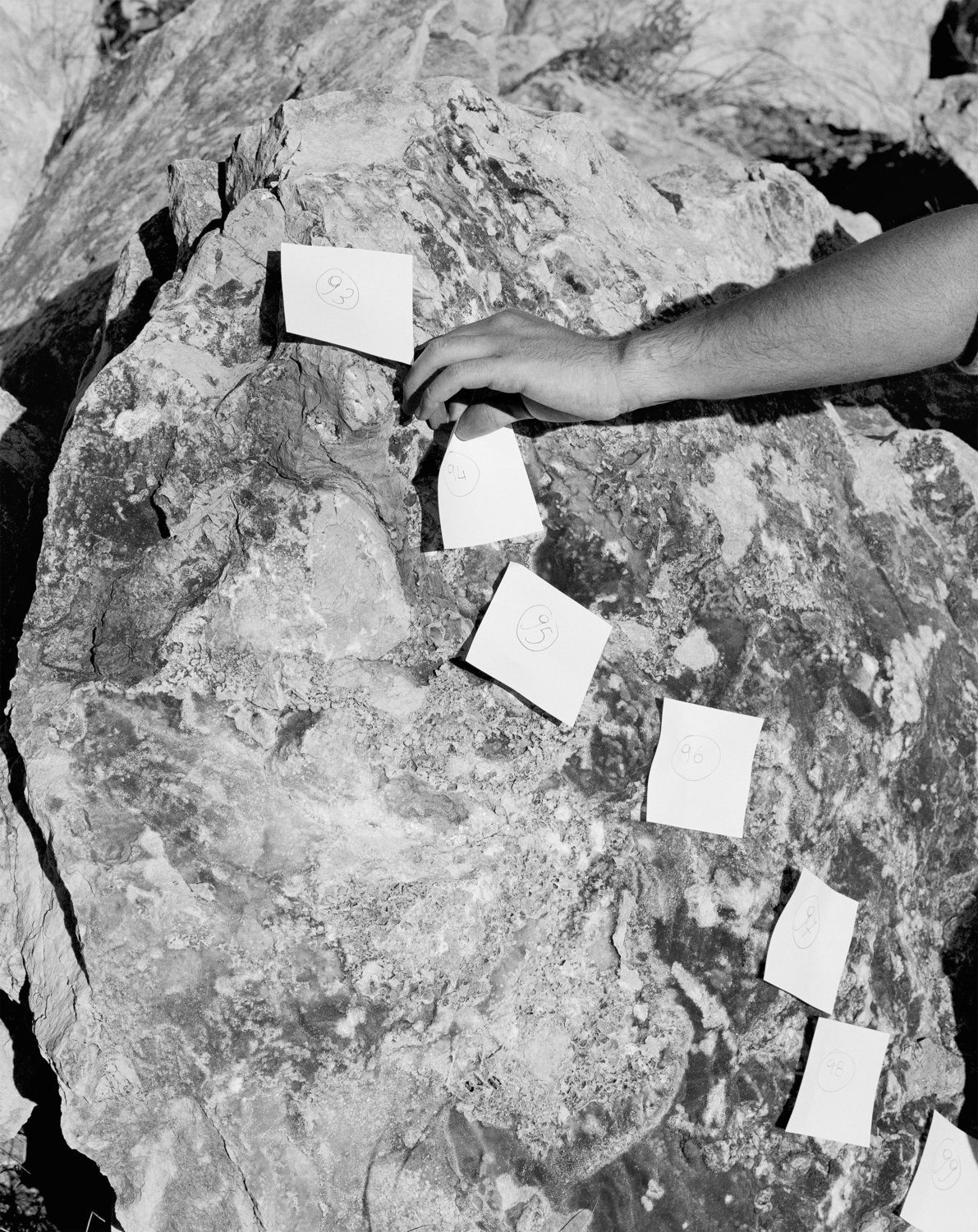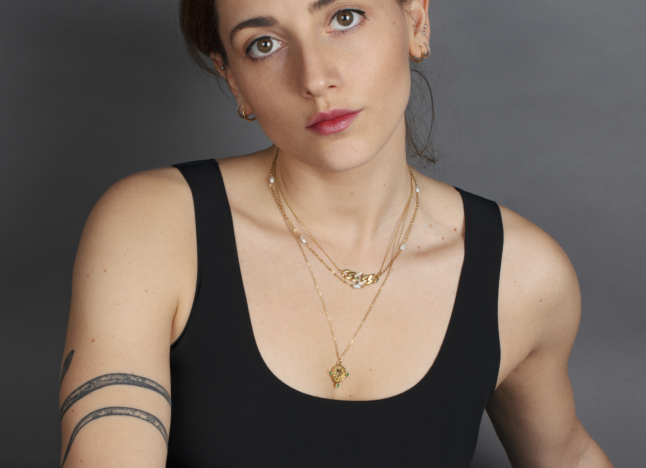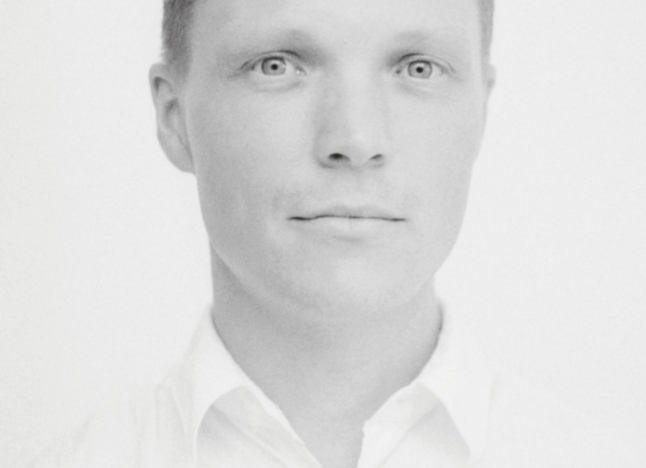Elena Helfrecht
Artist Feature
Every week an artist is featured whose single image was published by Der Greif. The Feature shows the image in the original context of the series.
Giulia Parlato - Diachronicles
Apr 22, 2020
Diachronicles is an examination of the historical space, regarded as a fictional container where an apparent collection of evidences opens up to the fantastic. In this space, the attempt to reconstruct the past falls into phantasmal gaps, where things are generated, used, buried, unearthed, transported, and relocated. This nomadic and fragmentary nature of what has been left behind, reveals how the movement, transfiguration, and misinterpretation of objects shape historiography and ultimately, the real. In the impossible search of academic legitimation, the viewer is invited into a world where the factual and the fake overlap. The work addresses the leading role archaeology and the museum space play in a historical narrative, using the human body to suggest scale and as a means to display objects. Furthermore, Diachronicles digs into a parallel history, filled with poetic figures to encode, nonexistent artefacts and forgeries hidden in museums basements. This exploration started at the Royal College of Art in 2018, is still ongoing.
Special thanks to Director of Museo Archeologico Regionale A. Salinas Francesca Spatafora, Sandro Garrubbo, Director of Museo di Zoologia P. Doderlein Sabrina Lo Brutto, Enrico Bellia, Soprintendenza per i beni culturali e ambientali di Palermo: The Director Lina Bellanca, the director of the archaeological heritage section Stefano Vassallo and the archaeologists Rosa Maria Cucco, Giuseppina Battaglia and Filippo Iannì.
Artist Blog
The blog of Der Greif is written entirely by the artists who have been invited to doing an Artist-Feature. Every week, we have a different author.
Published in:
»Guest-Room Tristan Lund«
On photography and archeology
Apr 28, 2020 - Giulia Parlato
On the 15th of February Revolv Collective hosted “Forms of Ground” at Seen Fifteen Gallery; a series of mini-symposiums considering photography’s ability to manifest through process, light and time. Me and Giovanna Petrocchi were in conversation with Ibrahim Azab talking about archeology and photography.
Giovanna’s and my practices are very close. We are both interested in artefacts and in reimagining the past. We started collaborating not long ago, when Artlicks Magazine commissioned us for issue 25 “With Monocrome Eyes” curated by Tom Lovelace and Holly Willats. Through working with Giovanna, I discovered how exciting collaborating with another artist can be, especially when you share similar interests.
We are both Italian artists coming from places filled with archeological sites and museums, ancient buildings and a complex urban stratification. Being surrounded by these ruins, sharing the same collective memories and the same academic background, had an impact in the way we look at photography and create work.
Archeology and photography both turn to the past and one follows the purpose of the other: to seek a historical truth by putting together material fragments and preserving them. The strong link between the two means of investigation begins from their birth in the 19th century.
The fact that photography was initially considered a medium of documentation and scientific truthfulness, made it a forensic means of excellence. Archeological photography and crime scene images are constructed in the same way. They follow specific rules wanting to be clear, organised and objective. The aim is to find traces of a story that has already taken place and arrive at a resolution. Nonetheless, this resolution is going to be partial.
The fascination of images lies in their incompleteness. The characteristic of the photographs is precisely that of concealment. What haunts me in photography is the analysis of such incompleteness, which in the scientific image reaches its most paradoxical and intriguing form. In my work, I talk about this absence and I enjoy doing so using a pseudoscientific language, mixing reality and fantasy.
Above: Diachronicles by Giulia Parlato
Below: Collateral Histories by Giulia Parlato & Giovanna Petrocchi
On historiography
Apr 27, 2020 - Giulia Parlato
“antiquity is not ‘a pure object of time’ returning in its unaltered state when revoked: it is a considerable movement of the subsoil, a dull vibration, an harmonic passing through the whole layers of history and levels of culture”. Georges Didi-Huberman, The Surviving Image: Phantoms of Time and Time of Phantoms
The past, as we know it, is undoubtedly the result of a careful selection of events to remember and physical objects to preserve, discarding the rest in a dark limbo of knowledge where everything will at some point be forgotten. Thus, I perceive history as filtered and I must go beyond the rules of perpetuation in favour of a new history, or more appropriately, a suppressed history of traditions and images. On the one hand we tend to cling to a preserved imaginary past, on the other we wish for more, perhaps something speaking more directly to us, something that exists apart from systematical thinking and which has a lot to do with different forms of primitivism, human expression and free association. In dealing with past events, it is necessary to point out historiography’s narrative limits, and conversely, time as a dynamic force pointing in countless directions. Since historiography means tracing the past, it is important to point out that history is therefore a collection of documents and evidence carefully put together through different narrative devices. Historiography is a spoken museum of the past, a mental space tidied up, with different corridors and sections, where every world is on display like ancient utensils in vitrines. Those traces left behind, which are used to connect the ‘dots’, have nothing to do with an authentic truth. Thus, the memory’s wish to preserve the past is condemned to remain unfulfilled.
I use photography to challenge the medium’s historical use as a document of truth, specifically in its scientific and forensic uses, by creating a new space in which fake histories take place.
Workflow Notes
Apr 26, 2020 - Giulia Parlato
My work is heavily researched and influenced by music and cinema which helps me to write down my shooting list.
I like to have a very long shooting list to visualise the body of work in my head. Then I condense my shooting days, photographing uninterruptedly. I start by taking the photos I had on my list and then I see how things can unfold. For “Diachronicles”, I took the images in a studio in London and on locations in Sicily but it varied. Sometimes something worked in an actual museum, other times I have used my garden.
However, I’m able to produce the work I’m driven to, through contacting a lot of people, for official requests and research purposes and then engage with specialists during the shooting process, often including them in the frame. I have always found this part the most interesting in the end: to use image making to learn any random topic though direct experience and dialoguing.
Usually, my process of making an image is really slow and constructed. I’m attached to that romantic idea of something extraordinary only happening for the camera, something that would have never took place otherwise. I also tend to work by taking things out of the frame, subtracting information. At the same time, I want to leave that percentage of accident which I have learned through the years to be so important. Even if staged, I aim for a photograph to express freedom and immediacy.
When possible, I play music loud when I photograph. The first image above for instance, was taken while listening to Familiar by Agnes Obel, which I’m attaching down here.
Time Gap. A recent graduate on self-isolation.
Apr 25, 2020 - Giulia Parlato
I’ve been self-isolating since the 10th of March and certainly the current spread of Covid-19 is having a massive impact in my life too. Some days it’s hard to stay positive and find ways to be productive during this horrible time. When I graduated from my MA in July 2019, I had a certain idea of what 2020 had to look like. I wanted to secure myself a job, keep pushing my practice and be able to afford being in London, which we all know is not exactly the cheapest city. It wasn’t easy before and now I know it’ll be even harder to go back to the position I was in before this all happened. Having so much time to think, not knowing what is gonna happen scares me. For my all life I had a plan and I stuck to it. 2020 is for me a year of confrontation.
I had to confront myself with massive failures related to job applications, grants and residencies. I worked in a restaurant for a while in order to be able to be in London while applying for art jobs (most of which I wasn’t even interested in) and I was frustrated. In the end it felt I had no time. No time to apply for things that mattered properly, no time to see exhibitions, no time to take pictures and no time to see people I love. I wanted to find a new routine as quickly as possible and release my parents from the financial support they are offering me. I was trapped in a vortex of anxiety without even realising it.
Like myself, many other artists without an established practice and a secure job are in the same position of uncertainty and fear. We are forced to keep up with the art industry’s speed not to be left behind. This, as we know, is the main difference between art school and real world. In art school, society demands you to focus on your ideas and to make work. In the real world you are lucky if you have time to make work.
2020 is also a year of confrontation because all these dynamics have been temporarily erased and due to the pandemic we are suddenly confronted with forced free time.
What to do with this free time?
I’ve realised if I wanted to stay positive, I had to prioritise my practice again and spend my days doing what I was unable to focus on in the past months. It is something we can all do and which we could benefit from when this weird period will be over and we will have to go back to our daily duties.
Here is my list of ideas:
- Apply for Residencies
There are a lot of residencies you can chose from and it is important to genuinely think about what would be beneficial to your practice. Making an application for a residency you are truly interested in, motivates you to spend time writing a good proposal. It takes a lot of effort to come up with a strong proposal and it’s time consuming. I’ve never been accepted to any residency I’ve applied to. My applications were often unnecessarily rushed due to the lack of time while now I have nothing to run to, so I’m motivated to sit down and really do my best. This could grant you an exciting opportunity to look forward to in the future and if not, it’s necessary exercise. The more you practice the better you get right?
- Contact people you admire
Something I’m not so great at is networking. Have you ever had that feeling of not wanting to disturb? It happens to me with highly successful people in the art industry, who are always surrounded by crowds at private views, which makes it impossible to say hello even when we might know each other. And let’s be honest, everyone needs and wants help from these people. To me the idea of stepping up, introducing myself and starting a conversation during one of these events, is overwhelming. Therefore my strategy has always been either waiting for the perfect alignment of the planets or contacting everyone through email. This strategy as you can imagine, wasn’t the most successful and I soon had to confront the fact that people usually don’t have time to reply to every single email. Right now however, even busy people are going through lockdown and adjusting their routine accordingly, therefore it could be a good moment to try and reach out. Contact someone who you think can be useful to meet. You could even suggest a video call to get to know each other. They might be open to help and answer your questions.
- Study and write down a shooting list
Now more than ever you finally have the time to conduct research that can inform your practice or push you towards new directions.
Listen to music, watch movies, enter museum virtual tours and see if anything sparks your imagination. Try to visualise images in your head and start writing a long shooting list. It doesn’t have to be linked to a series of images but you’ll end up with a lot of ideas to use in the future. You’ll never know what it can lead to.
- Write a short story or a longer text to go with your series of images
As a photographer, I’ve never had a text longer than 1000 words to accompany my images. I have infinite pages with notes and quotes I take during research, but I always end up with a condensed and structured piece of writing. My boyfriend Matthew, who is also a photographer, had this great idea to write a whole short story about his work. I find it to be so interesting and useful to go deeper into the subjects and keep reflecting on themes in search of new meanings and possibilities. We should take inspiration from him, look back at our images and write freely about anything that comes to mind. It’s a wonderful exercise to unlock hidden potentials a project could hold.
- Contact Magazines
Photo editors etc. are constantly looking for content. It’s harder for those people to discover new works and artists, since they can’t go to shows and events. Email them and offer your work. Their job is finding interesting artists to feature every month. If you are the one reaching out, you are basically making their job easier. If they are interested in your work, they will publish it.
To conclude, we are living a turning point in human history and some stuff will change after this Worldwide crisis. No one knows what to expect and we just have to act responsibly and wait, indoors. In the meantime, as someone once told me:” do one small thing related to photography every day and see what happens”.
Books I love, books on my reading list, books I wish I had.
Apr 24, 2020 - Giulia Parlato
- Annebella Pollen, The Kindred of the Kibbo Kift: Intellectual Barbarians
- Christian Patterson, Redheaded Peckerwood
- Caspar Henderson, The Book of Barely Imagined Beings
- Will Hunt, Underground: A Human History of the Worlds Beneath Our Feet
- Claude Lévi-Strauss, Myth and Meaning
- Claude Lévi-Strauss, Tristes Tropiques
- Larry Sultan and Mike Mandel, Evidence
- Georges Didi-Hubermann, The Surviving Image: Phantoms of Time and Time of Phantoms
- Sophie Calle, Ghosts
- Aby Warburg, A Lecture on Serpent Ritual
- Aby Warburg, Astrologica
- Luke Stettner, History Database
- Batia Suter, Parallel Encyclopedia
- Broomberg and Chanarin, Holy Bible
- Francesco Campagna, Techninc and Magic
- Peter Schwenger, Tears of things
- Otto Friedrich Bollnow, Human Spaces
- Joan Fontcuberta, Fauna
- Marten Lange, Chicxulub
- Trent Parke, Minutes to Midnight
- Victor Hugo, Notre-Dame de Paris
- C.S. Lewis, Out of the Silent Planet
- Umberto Eco, On beauty/On Ugliness (2 books)
- Umberto Eco, The Book of Legendary Lands
- W.G. Sebald, Austerlitz
- E. H. Gombrich, Art and Illusion: A Study in the Psychology of Pictorial Representation
- Jerome Ming, Oobanken
- Joanna Piotrowska, Frantic
- Aaron Schuman, Folk
- Aaron Schuman, Slant
Authentically fake antique pieces.
Apr 23, 2020 - Giulia Parlato
“our concern with history is a concern with performed images already imprinted on our brains, images at which we keep staring while the truth lies elsewhere, away from it all, somewhere as yet undiscovered”. Winfried Georg Sebald, Austerlitz
Diachronicles started while I was at the Warburg Institute, doing research for another project, also related to similar themes. I find their library and archive incredibile, especially because they have a lot on Italian culture. While I was there browsing through the forgery section, I started to think about the relationship that history has with fiction. In particular, what happens when you disrupt the historical narrative, which is ultimately really fragile being a narration/a fabricated story in itself.
The turning point for what Diachronicles is now, was getting in contact with the Regional Archeological Museum Salinas in Palermo and learning about the Mastressa’s fake case. A story of pure geniality about archeologist Cavallari and farmer Moschella, who produced and sold to several museums across Europe (from the British Museum to the Istituto Germanico in Rome and including the Museum Salinas) a series of odd limestone figures depicting fantastical creatures and Sicilian farmers from the ‘800. This, obviously pretending they were Greek statues from the 4th century discovered in Moschella’s land.
Thus, being captured by the story, the first image I took is of a piece from this series. This led to a further investigation into the subjects of authenticity, preservation and collective memory.
In recent times, after years of confinement in the museum’s storage spaces, the former director Francesca Spatafora decided to dedicate an exhibition to the peculiar sculptures defining them: “authentically fake antique pieces”.





